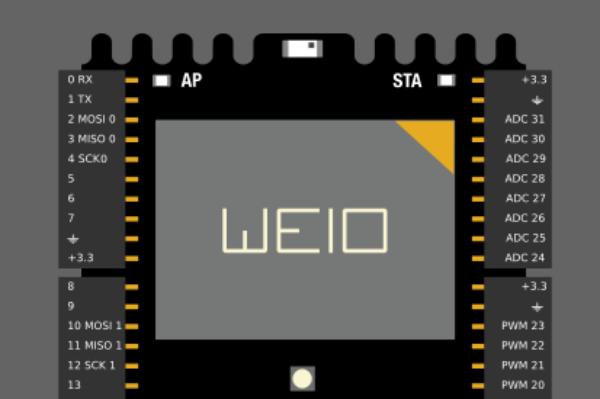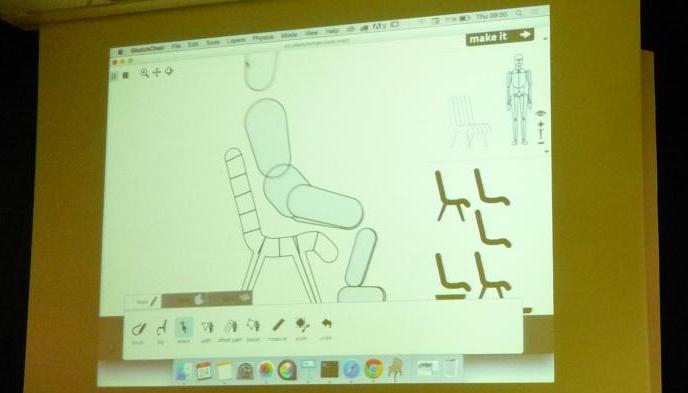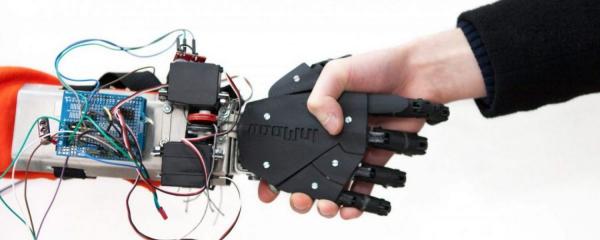Open chairs, worms and hands, four years later
What happened to four great Open projects I met in 2015?
Four years ago, while working in the Digital DIY project (DiDIY), I wrote a report of the “free/Open Source Software in academia” (fOSSa) conference in Nantes. Today, I republish part of that post, with some updates, because I find it still relevant.
From the DiDIY point of view, the four most interesting projects present at fOSSa 2015 were OpenWorm, WEIO, SketchChair and Bionico.org.
The first digital open worm

OpenWorm is a large “citizen science” effort to build the first complete digital model of an entire living organism (the C. elegans worm, that is) and all the tools needed to perform this task.
Internet of Things design, from any browser

WEIO is an Arduino-like board, that you can use to build smart objects that are accessible from the Internet. The great advantage of WEIO, with respect to Arduino, is that you don’t need to install anything on your computer. Unlike what happens with Arduino. all the software needed to develop applications and program the board is inside the board itself, and usable by any modern Web browser!
Designer chairs, drag and drop style

SketchChair is “a free, open-source software tool that allows anyone to easily design their own digitally fabricated furniture”. Eventually, you get the design files to build the pieces with a CNC machine, or the drawings to cut them manually. We were surprised to see how easy, even fun it seemed to use it.
Open, easy to repair hands

The goal of Bionico.org, whose aim is “to bring together a team around the world for the construction of a prosthetic upper limb at a low cost, due to standardized parts and open sources, easy to repair and therefore accessible to people with limited financial resources”.
That was 2015. How are things going now?
OpenWorm is currently “building in the physics of muscles, soft tissues and fluids. Because it matters.” How can anybody not love a mission statement like that?
Even Bionico.org looks active, used and more useful than ever. As I write, the most recent blog post is only 2 months old, and is about an open hardware prothesis for a Japanese woman.
SketchChair seems “frozen”. The designs are still online, but the project seems abandoned. The most recent photo in the Flickr group is from 2012, the SketchChair blog (blog.diatom.cc/sketchchair ) returns 404, the forum yelds a “Database Error”, and the wiki has been spammed:

Back in 2015, I wrote that “SketchChair is still looking for a business model… [maybe] this, and any similar project, may search its paying customers among fablabs and makerspaces from all over the world”. I would like to know what happened.
WEIO? The home page looks good, but if you follow the links on its distributors page, only the third (Lian Mueller) seems to have them in stock. The other two return 404 (8devices.com) or (only) “very small quantities” available (“très faible quantité”) (Lextronics. What’s worst, its github and documentation pages are empty, and even the forum seems dead.
Two or three out of four? It could have been worse
I have no problem to say that I would have been sad, but not surprised to find all those four projects dead, after four years. As is, the only one really lost seems WEIO, since its code and documentation are not online anymore. That’s life. Especially the life of volunteer/small projects of open projects. I am also happy that the two projects of that group that I considered the most needed for their socioeconomic impact, are one active (Bionico) and one (SketchChair) still available for whoever may need it.
Who writes this, why, and how to help
I am Marco Fioretti, tech writer and aspiring polymath doing human-digital research and popularization.
I do it because YOUR civil rights and the quality of YOUR life depend every year more on how software is used AROUND you.
To this end, I have already shared more than a million words on this blog, without any paywall or user tracking, and am sharing the next million through a newsletter, also without any paywall.
The more direct support I get, the more I can continue to inform for free parents, teachers, decision makers, and everybody else who should know more stuff like this. You can support me with paid subscriptions to my newsletter, donations via PayPal (mfioretti@nexaima.net) or LiberaPay, or in any of the other ways listed here.THANKS for your support!